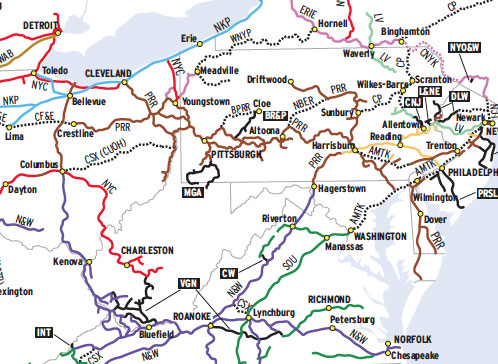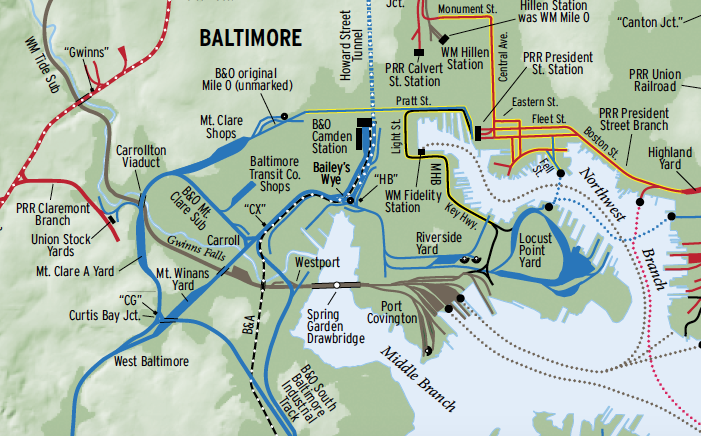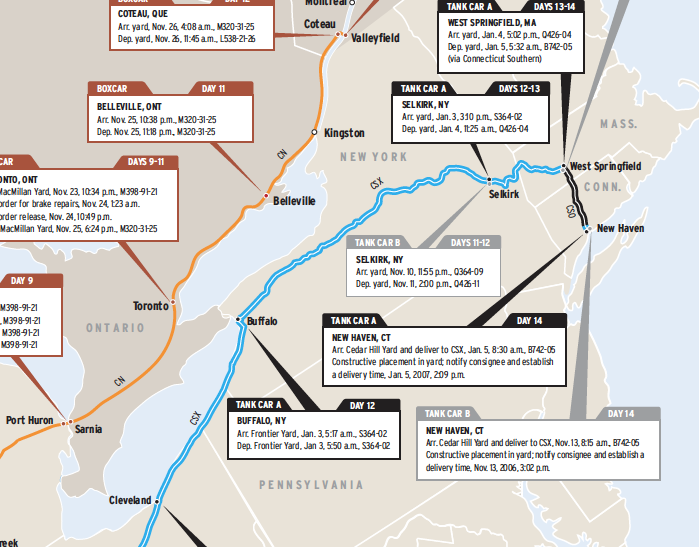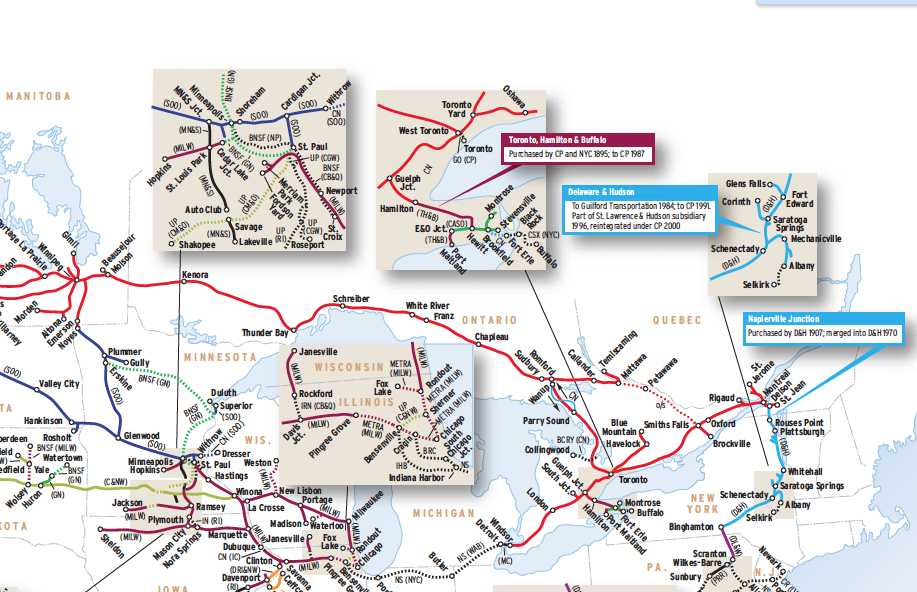This Map of the Month appeared in the February 2004 issue of Trains magazine.
Historians have argued that one key to the success of Norfolk & Western’s 1982 consolidation with Southern Railway was that the railroads shared a similar culture — determined, forward-looking, and committed to success. This served to douse the fires of early rivalries with a single-minded focus on making the unified system work, and work well.
It didn’t hurt that each railroad also had a solid franchise — not always the shortest or fastest route, but track that was productive and well-maintained nonetheless.
In the 1960s, when most railroads were merging to eliminate parallel lines, including the giant Penn Central, N&W by force looked outward, acquiring the Nickel Plate, leasing the Wabash, and tying all three together with a Pennsylvania Railroad line from Columbus, Ohio, to Lake Erie. N&W’s strategic play got it more than just track: It gained access to western gateways and new traffic sources, such as Wabash’s Detroit-area auto business, that would reduce its dependence on coal.
Southern and N&W might not have been prominent on each other’s radar screens before the CSX accretion of 1980 (Southern previously had explored a merger with Missouri Pacific and petitioned unsuccessfully for Monon’s route to Chicago). But each recognized the benefits of combining two strong Eastern railroads that shared common endpoints but served different regions.
Buying 58 percent of Conrail in 1998 was an equally critical move that strategically positioned Norfolk Southern for handling today’s growth commodity, intermodal traffic, which polished the rails of Conrail’s high-volume traffic lanes between Chicago and the Eastern Seaboard.
Until recently, Norfolk Southern’s component franchises had remained essentially independent operations: Coal moving on former N&W lines had nothing to do with the land-bridge containers rolling across the former Pennsylvania main line. Where the benefits of today’s 20,000-mile system were seen most clearly were on key routes no other U.S. railroad either had or served nearly so well: Detroit to Kansas City on the Wabash, and the CNO&TP funnel between the Great Lakes and the Sunbelt.
However, 30 years into the NS era, that historic traffic separation has begun to dissolve, driven by the Heartland Corridor project that cleared the former N&W main line to handle double-stacked containers coming out of Virginia’s ports. A similar clearance project on the main routes from Pennsylvania south to Memphis and New Orleans will pave the way for double-stacked containers flowing north and south across the eastern United States.
Railroads included in this map:
Alabama & Gulf Coast; Amtrak; Atlanta & East Carolina; Atlantic Coast Line; Alabama Great Southern; Brimstone; Buffalo, Rochester & Pittsburgh; Canadian National; Canadian Pacific; Central of Georgia; Central New York; Central Railroad of New Jersey; Chicago, Fort Wayne & Eastern; Cincinnati, New Orleans & Texas Pacific; Chicago & North Western; Chesapeake Western; Columbus & Ohio River; Conrail; CSX Transportation; Delaware, Lackawanna & Western; Erie; Georgia & Florida; Gulf, Mobile & Ohio; Interstate; Illinois Terminal; Kansas City Southern; Lehigh & Hudson River; Lehigh & New England; Lehigh Valley; Metra; Monon; Monongahela; NJ Transit; New Orleans & Northeastern; New York Central; New York, Chicago & St. Louis; New York, Ontario & Western; Nittany & Bald Eagle; Norfolk Southern; Norfolk & Western; Pan Am; Peoria & Eastern; Pennsylvania; Pennsylvania-Reading Seashore Lines; Savannah & Atlanta; Southern; Tennessee; Virginian; Wabash; Western New York & Pennsylvania; West Tennessee; Wrightsville & Tennille














